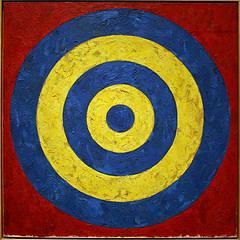
The primary goal of your search engine optimization (SEO) is to drive relevant people that are interested in your industry or company to your website. If you follow SEO than you know how fast things change. You also know how hard it can be to keep all with these changes.
SEO is actually a relatively simple technique that requires small changes based on major changes the search engines announce. I bold major changes because the changes really need to be major to affect your overall website rankings and SEO strategy.
Here are nine SEO techniques that you should always follow regardless of the changes the search engines are continuously making.
Pre-Step 1:
Read the page’s content and identify two or three keywords that are most frequently used in the page’s content and are relevant to the overall page topic. You should only target
two (2) or three (3) keywords per website page
. If can’t identify two or three keywords for a page you than need to separate out the pages content and create a new website page.
1. Page Title
The page title needs to be under 70 characters and no more than 3 long tail keywords in the page title. Your most important keyword should be first and each keyword should be separated by pipes (|).
2. Meta Description
The meta description should be under 150 characters and incorporate two of the keywords used in the page’s page title. The best meta descriptions provide a valuable, compelling reason why someone should visit the page. Don’t add keywords into the meta description for the sake of having them in there, but include them in a conversational format.
3. URL
The website page’s URL should include the first keyword you used in the pages page tile
from step 1
. The keywords in the URL should be separated using dashes (-). e.g. www.sample.com/best-vermont-ski-resorts
4. Heading Tags
The page should have one (1) or two (2) H1 heading tags that use the first two keywords in the page title in step 1. These keywords should be used in a conversational format in the pages content. In addition to H1 tags, the page should include a couple of H2 heading tags that usually go underneath each H1 tag.
5. Page Content
Use both the keywords that are in your page title at least three times in the page’s content. Try to bold or underline the keyword at least once. This has an effect on how relevant the keyword is to the page.
6. Internal Links
Create one (1) or two (2) internal links on the page linking to related pages. Use the keywords you’re targeting on the page that you’re linking to in the anchor text for each link.
7. Images
Any images used on the page should have their file name match one of the keywords in the page title. Each word in the file name should be separate with dashes (-). The image alt text should match the image’s file name and the keyword in the page title. Don’t use dashes between the word in the alt text.
If you are unable to change image file name or it’s a very time consuming process, then only change the image’s alt text using a keyword from the page title.
8. Cross Linking Pages
Make sure you have at least three internal links that link to the page you’re optimizing. The link’s anchor text should have keywords that are included in the page you’re linking too.
9. Meta Keywords
They aren’t part of Google’s or Bing’s search algorithm, so they aren’t as important as steps 1-8. However, still add three (3) to five (5) meta keywords to the page that are related to the page title and content. Smaller search engines still might use them in their algorithm.
SEO



.png)




.jpg)
![The Future of Google: Web Strategists Predict How AI Overviews & Other Search Changes Will Impact Traffic [New Data]](https://53.fs1.hubspotusercontent-na1.net/hubfs/53/seo-sge-1-20241031-8247348.webp)
